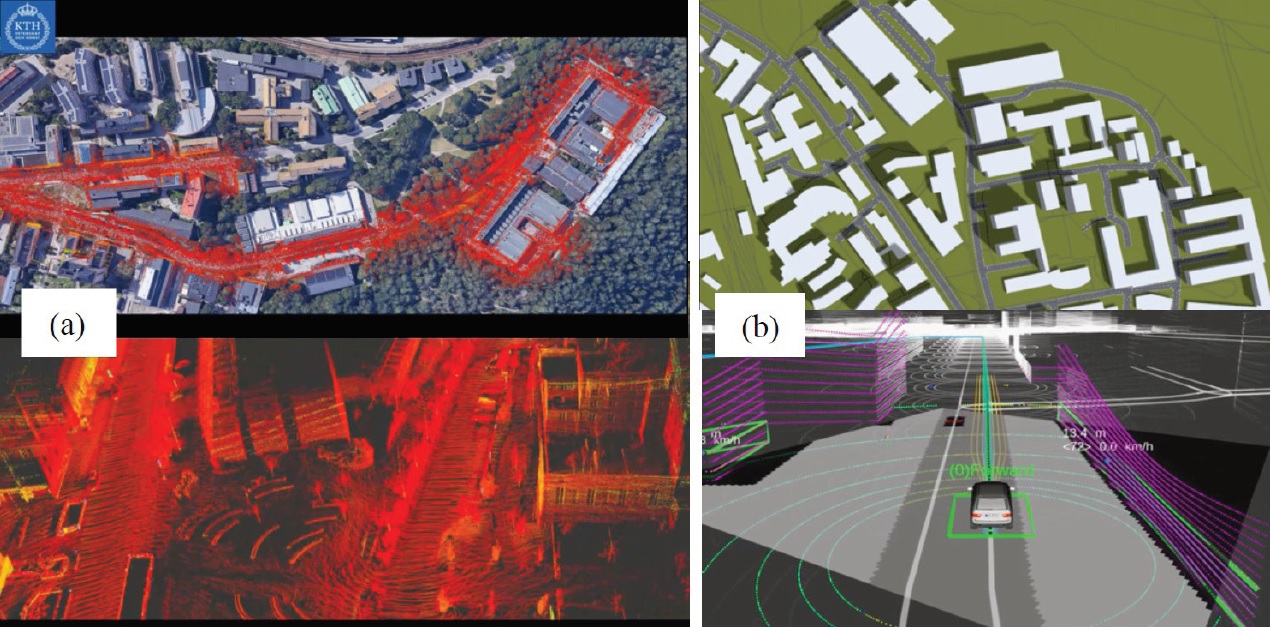Campus 2030 : Enabling systemic solutions for smart roads
To stimulate interaction with an open smart road digital platform, the project launches a Digital Twin of KTHs road infrastructure including an augmented reality (AR) experience on campus.

Project period 1: 2020-2023
Project leader: KTH Road2Science Competence Center
Keywords: systemic solutions, smart mobility, innovative partnerships
Partners: ITRL Integrated Transport Research Lab, ICES Innovative Centre for Embedded Systems, 3D Interactive, Teknikkvinnor AB, Trafikverket, Veidekke
Funding: Vinnova, InfraSweden2030
Project Description
With the advent of smart transportation, infrastructure can no longer be seen as a static part of the solution, in which possible ‘smart’ IT components are merely placed within the body/surface of the road. Nor can ‘the road’ and it associated industry longer be operating as a separate part of the transport equation, as more integrated road solutions are needed. This change towards more complex solutions and partnerships has to be managed. For this reason, in the heart of the KTH campus, Campus2030 will enable innovative partnerships towards sustainable systemic solutions of smart roads. The project, building upon existing tools and expertise, launches a Digital Twin of KTHs road infrastructure that includes an augmented reality (AR) experience on campus to stimulate interaction with an open smart road digital platform developed in the project.
Background
Enabling systemic solutions of smart roads
Autonomous vehicles, dynamic charging of electrical vehicles and vehicle-to-infrastructure communication are a few good examples that all require a systemic solution in order to function sustainably. With this change of approach, infrastructure can no longer be seen as a static part of the solution, in which possible ‘smart’ IT components are merely placed within the body/surface of the road. Nor can ‘the road’ and it associated industry longer be operating as a separate part of the transport equation, as more integrated road solutions are needed.

Such integrated solutions constitute Cyber-Physical Systems (CPS) that promise to improve availability, safety, and efficiency while promoting and adopting sustainability as an innovation driver. The integration of more advanced technologies into the infrastructure requires up-front consideration of a number of aspects such as circularity (e.g. reuse, recycling), side effects and trustworthiness. To be able to move successfully forward from this traditional pavement engineering structure to the smart road which is improving society’s sustainability, we need to manage the change process.
Digital Twin with an Augmented Reality experience
Campus2030 is proposing to start a digital demo site in the very heart of KTH campus, which is based on the development of a Digital Twin of the road infrastructure and enables a dynamic interaction with users via Augmented Reality (AR) case-studies on campus. The Digital Twin essentially corresponds to multiple models and data sets that enable to virtually assess and experience the Campus, while being validated and upgraded through connections to the real world (based on real data).
Campus2030 is building further on the results and expertise generated from many different projects by the project partners including feasibility studies on electrified roads, development of control towers for geofencing and autonomous driving, pavement-sensor integration experiments, exploring the use of drones for road maintenance observations, building of augmented realities for enhanced user engagement, collecting of data to generate 3D models of infrastructure, the development of simulation software for infrastructure predications and autonomous driving guidance, and development of more general strategies and methodologies for dealing with advanced CPS.
Purpose and goals of Campus 2030
Together with its industry and KTH partners, Campus2030 provides an environment that serves as an important nursery for students, researchers, industry stakeholders and authorities to test out and systemically optimize smart transportation ideas, making use of the full cross-disciplinary range of expertise available.
With the creation of Campus2030, we hope to create a structured approach to help manage a systemic change towards the new realities of a sustainable transportation infrastructure sector, including a wide variety of challenges and opportunities coming from digitization.

For more information contact:
